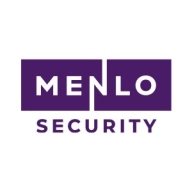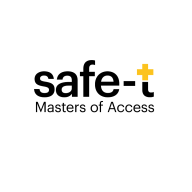

Menlo Secure and Safe-T Secure Application Access compete in the secure application access market. Safe-T Secure Application Access seems to have the upper hand due to its robust feature set and broad deployment capabilities, though Menlo Secure offers more favorable pricing.
Features: Menlo Secure offers advanced threat prevention, isolation capabilities, and seamless integration for web access control. Safe-T Secure Application Access provides strong identity management, zero trust architecture, and efficiency in securing data-in-transit.
Room for Improvement: Menlo Secure could improve logging capabilities, reduce the need for site bypass from isolation, and enhance SSL decryption flexibility. Safe-T Secure Application Access might enhance pricing structures, improve user interface design, and reduce integration complexity with third-party services.
Ease of Deployment and Customer Service: Safe-T Secure Application Access features a flexible, cloud-based deployment model with extensive documentation and responsive support. Menlo Secure offers an intuitive service experience and proactive customer support, ensuring efficient deployment and customer satisfaction.
Pricing and ROI: Menlo Secure offers competitive pricing, providing notable ROI for focused threat prevention solutions. Safe-T Secure Application Access, with higher setup costs, justifies the expense through comprehensive security features and high potential ROI, benefiting organizations needing extensive security capabilities.

Menlo Security Secure Application Access
Menlo Security Secure Application Access makes zero trust access easy, giving users secure connectivity to private applications, including web and legacy applications. At the core of Secure Application Access is the Menlo Secure Cloud Browser, which fetches, secures and delivers the content for users.
In addition to providing simple-to-deploy, clientless ZTA, Secure Application Access and the Menlo Secure Cloud Browser protect applications from attacks such as session hijacking, cookie manipulation, and other tactics that employ protocol manipulation.
Secure Application Access protects applications from Internet threats and provides granular controls for added protection of the application and associated data. These security controls include Read-only/Read-write, Upload/download, Copy/paste, AV scanning, Sandboxing, and Data Loss Prevention.
Last Mile Data Protection
Menlo Last-Mile Data Protection identifies and prevents sensitive data from leaving your company by meticulously inspecting all file uploads and user input across browsing sessions. Leveraging the Secure Cloud Browser, users are protected from the internet and you can protect your organization from data loss with comprehensive traffic monitoring and controls. This approach addresses the growing concerns surrounding data leakage in the age of AI tools like ChatGPT.
By identifying sensitive data through file types, regular expressions, or predefined libraries, Menlo Last-Mile Data Protection empowers security teams to regulate data input into AI platforms and prevent unauthorized uploads. This capability provides crucial protection for intellectual property, PII, and other confidential information.
The solution leverages the Menlo Cloud Security Platform's visibility and control over traffic to reliably detect and prevent data leaks originating from both browser submission forms and non-browser traffic. With the ability to inspect encrypted web traffic, Menlo Last-Mile Data Protection enforces DLP policies consistently across all users and devices, ensuring comprehensive data protection.
Safe-T is a provider of Zero Trust Access solutions which mitigate attacks on enterprises’ business-critical services and sensitive data, while ensuring uninterrupted business continuity.
Safe-T’s cloud and on-premises solutions ensure that an organization’s access use cases, whether into the organization or from the organization out to the internet, are secured according to the “validate first, access later” philosophy of Zero Trust.
This means that no one is trusted by default from inside or outside the network, and verification is required from everyone trying to gain access to resources on the network or in the cloud.
Safe-T’s wide range of access solutions reduce organizations’ attack surface and improve their ability to defend against modern cyberthreats. As an additional layer of security, our integrated business-grade global proxy solution cloud service enables smooth and efficient traffic flow, interruption-free service, unlimited concurrent connections, instant scaling and simple integration with our services.
With Safe-T’s patented reverse-access technology and proprietary routing technology, organizations of all size and type can secure their data, services and networks against internal and external threats.
At Safe-T, we empower enterprises to safely migrate to the cloud and enable digital transformation.
We monitor all ZTNA reviews to prevent fraudulent reviews and keep review quality high. We do not post reviews by company employees or direct competitors. We validate each review for authenticity via cross-reference with LinkedIn, and personal follow-up with the reviewer when necessary.